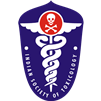Book Review Clinical Toxicology – A case-based approach
Keywords:
clinical toxicology, case-based approach, poisoning, treatment, poison photosAbstract
The Book titled, “Clinical Toxicology – A case-based approach” edited by Dr Narendra Nath Jena and Dr S. Senthilkumaran is a very handy book for everyone who is practising clinical toxicology. As the name of the book itself suggests, the book contains various cases of commonly encountered poisoning and their treatment. The simple and easily understandable treatment protocols are the high points of the book.
The case-based approach to many common poisonings is the highlight of the book. 51 commonly encountered poisoning cases in the clinical practice are included in the book with general and specific management approaches. The different parts of the country may encounter different types of poisoning cases based on common poisons available in those parts. It poses a difficulty for the treating clinician to formulate the management strategy if they have not encountered such poisoning cases. But this book, “Clinical Toxicology – A case-based approach” has the answers to all such difficulties as it is edited so beautifully keeping in mind the common poisoning cases not only prevalent all around the country but also a few cases found elsewhere in the world.
Every chapter in the book is structured in such a way that it attracts readers' attention. The chapters start with the case report in detail followed by a discussion of the specific poisoning. It also includes the mechanism of action, clinical features & relevant investigations to be done highlighting the necessity or relevance of getting done those investigations and the most sought treatment of the case. In the treatment section, the step-by-step approach, the accurate dose of the medicine, and the rationale behind using the particular medicine are mentioned. This helps the clinician and all the persons practising toxicology to better understand the concept of treating the case. In some cases, additional findings helping the diagnosis of the case as well as essential supplementary management protocols have been added. Both the features of acute as well as chronic toxicity are included in the book. The appropriate photographs pertaining to the case or the poison consumed are like icing on the cake. However, the editors can think of adding colour photographs for a better understanding of the points, which they want to convey to the readers.
Overall, it's a handy, crisp, and well-written book in the field of clinical toxicology. Anyone can easily go through the different cases and understand the concept of managing those poisoning cases. Also, it can be a companion to all working in the emergency department handling poisoning cases.



